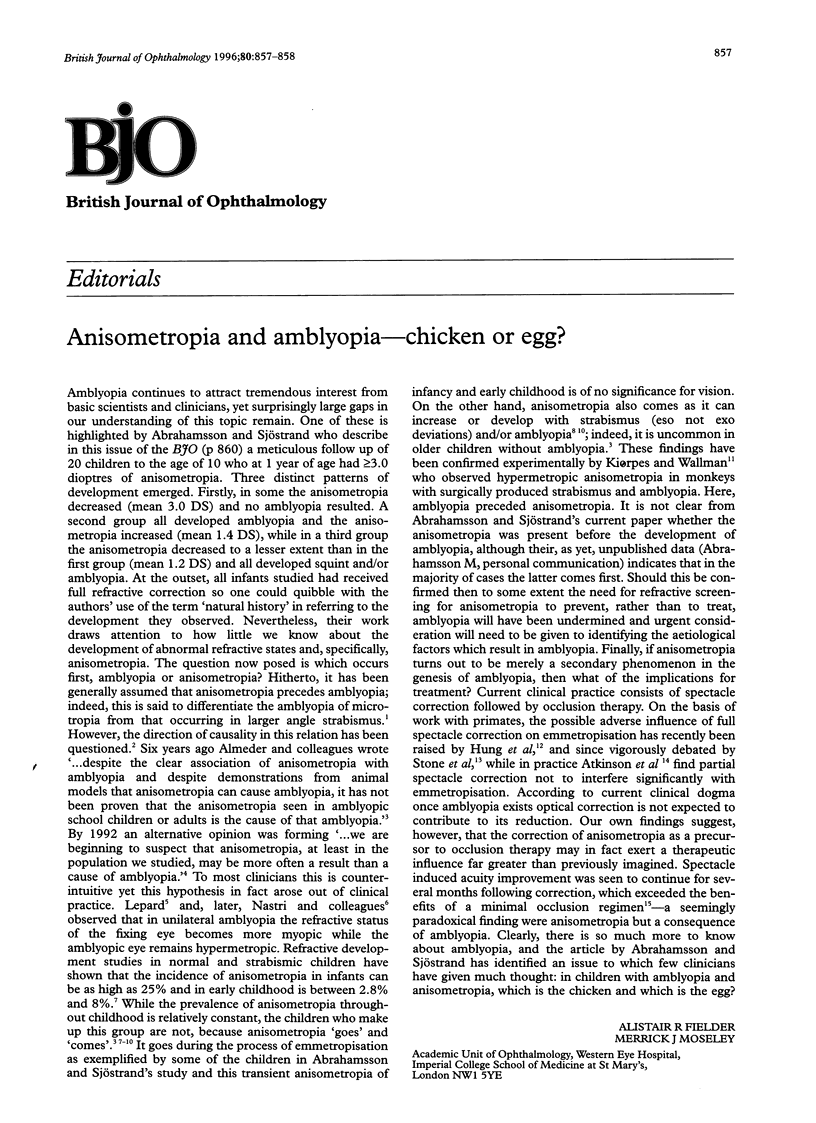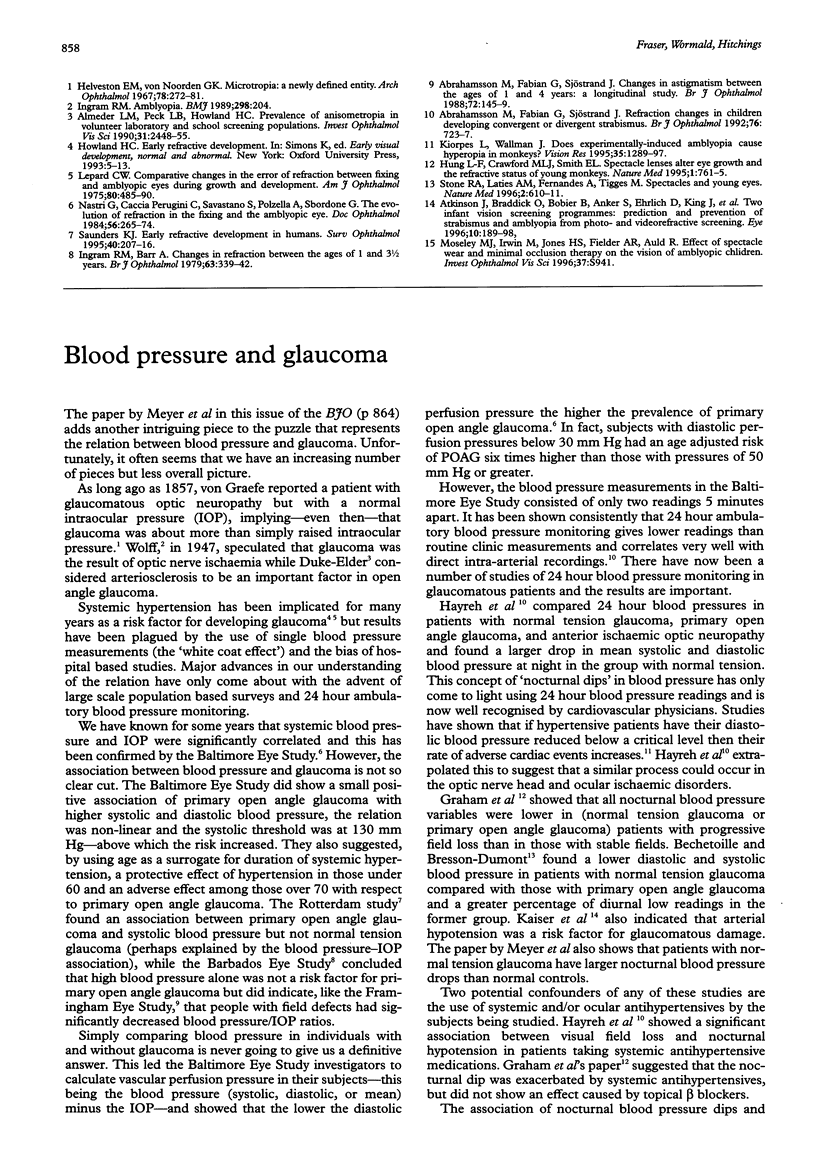Full text
PDF

Selected References
These references are in PubMed. This may not be the complete list of references from this article.
- Abrahamsson M., Fabian G., Sjöstrand J. Changes in astigmatism between the ages of 1 and 4 years: a longitudinal study. Br J Ophthalmol. 1988 Feb;72(2):145–149. doi: 10.1136/bjo.72.2.145. [DOI] [PMC free article] [PubMed] [Google Scholar]
- Abrahamsson M., Fabian G., Sjöstrand J. Refraction changes in children developing convergent or divergent strabismus. Br J Ophthalmol. 1992 Dec;76(12):723–727. doi: 10.1136/bjo.76.12.723. [DOI] [PMC free article] [PubMed] [Google Scholar]
- Almeder L. M., Peck L. B., Howland H. C. Prevalence of anisometropia in volunteer laboratory and school screening populations. Invest Ophthalmol Vis Sci. 1990 Nov;31(11):2448–2455. [PubMed] [Google Scholar]
- Atkinson J., Braddick O., Robier B., Anker S., Ehrlich D., King J., Watson P., Moore A. Two infant vision screening programmes: prediction and prevention of strabismus and amblyopia from photo- and videorefractive screening. Eye (Lond) 1996;10(Pt 2):189–198. doi: 10.1038/eye.1996.46. [DOI] [PubMed] [Google Scholar]
- Helveston E. M., Von Noorden G. K. Microtropia. A newly defined entity. Arch Ophthalmol. 1967 Sep;78(3):272–281. doi: 10.1001/archopht.1967.00980030274003. [DOI] [PubMed] [Google Scholar]
- Hung L. F., Crawford M. L., Smith E. L. Spectacle lenses alter eye growth and the refractive status of young monkeys. Nat Med. 1995 Aug;1(8):761–765. doi: 10.1038/nm0895-761. [DOI] [PubMed] [Google Scholar]
- Ingram R. M. Amblyopia. BMJ. 1989 Jan 28;298(6668):204–204. doi: 10.1136/bmj.298.6668.204. [DOI] [PMC free article] [PubMed] [Google Scholar]
- Ingram R. M., Barr A. Changes in refraction between the ages of 1 and 3 1/2 years. Br J Ophthalmol. 1979 May;63(5):339–342. doi: 10.1136/bjo.63.5.339. [DOI] [PMC free article] [PubMed] [Google Scholar]
- Kiorpes L., Wallman J. Does experimentally-induced amblyopia cause hyperopia in monkeys? Vision Res. 1995 May;35(9):1289–1297. doi: 10.1016/0042-6989(94)00239-i. [DOI] [PubMed] [Google Scholar]
- Lepard C. W. Comparative changes in the error of refraction between fixing and amblyopic eyes during growth and development. Am J Ophthalmol. 1975 Sep;80(3 Pt 2):485–490. doi: 10.1016/0002-9394(75)90212-3. [DOI] [PubMed] [Google Scholar]
- Nastri G., Perugini G. C., Savastano S., Polzella A., Sbordone G. The evolution of refraction in the fixing and the amblyopic eye. Doc Ophthalmol. 1984 Jan 30;56(3):265–274. doi: 10.1007/BF00159077. [DOI] [PubMed] [Google Scholar]
- Saunders K. J. Early refractive development in humans. Surv Ophthalmol. 1995 Nov-Dec;40(3):207–216. doi: 10.1016/s0039-6257(95)80027-1. [DOI] [PubMed] [Google Scholar]
- Stone R. A., Laties A. M., Fernandes A., Tigges M. Spectacles and young eyes. Nat Med. 1996 Jun;2(6):610–612. doi: 10.1038/nm0696-610b. [DOI] [PubMed] [Google Scholar]


